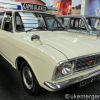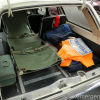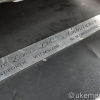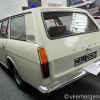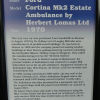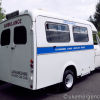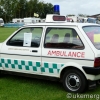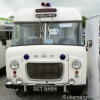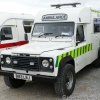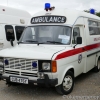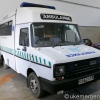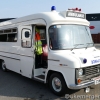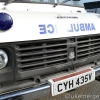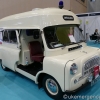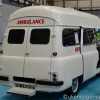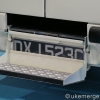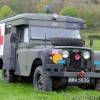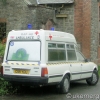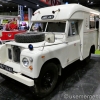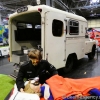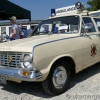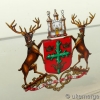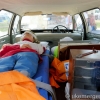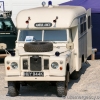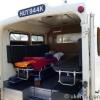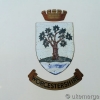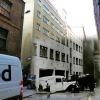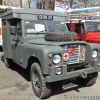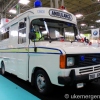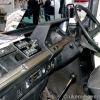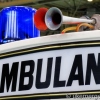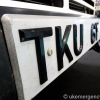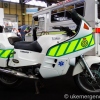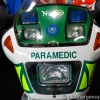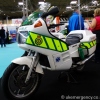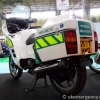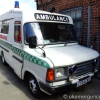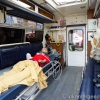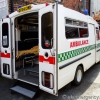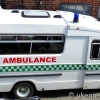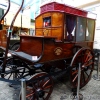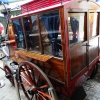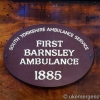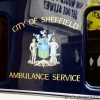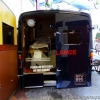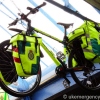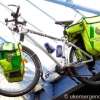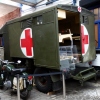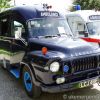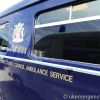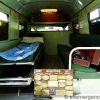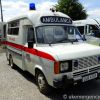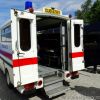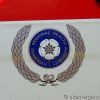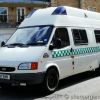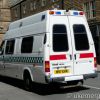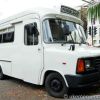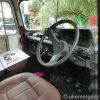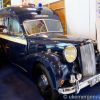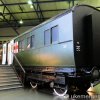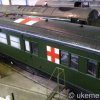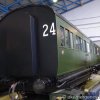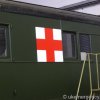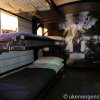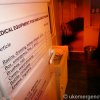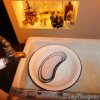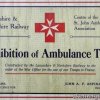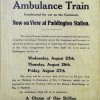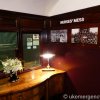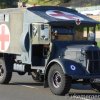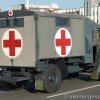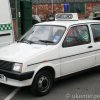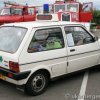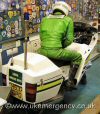Category: Classic Ambulance
Classic and vintage ambulances. Some are no longer in existence, some are still around today and preserved.
G577 MWD West Midlands Ambulance Service Norton Co..
G577 MWD
West Midlands Ambulance Service
Norton Commander
Paramedic motorbike now in preservation. This 1989 vehicle was when paramedics were new and there weren’t many in each ambulance service. Their specialist skills would see them travel in cars or on motorbikes across the county to the most serious ambulance calls.
A recreation of an ambulance train. Long trains like this were
A recreation of an ambulance train. Long trains like this were used to evacuate sick and injured soldiers to safety UK during World War I in 1914-18. Inside were bunk beds, nurses and a small pharmacy.
These huge hospitals on wheels were built at an incredible speed by the railway companies across Britain before entering service in France as well as the UK.
The trains were tightly packed with patients scarred by wounds as well as memories. The men were cared for by staff who worked long hours under intense pressure.
Typically there would be 47 orderlies, 3 medical officer, 3 nurses and 3 chefs looking after an incredible 500 casualties. The philosophy was to carrying as many casualties as possible as it was better to transport many people in some discomfort than to leave people at the battle front casualty clearing stations.
Triple bunks were used to maximise the space. If there were a number of seated patients, then they would occupy the lower bunks and this could push the number of patients being carried up to 650.
A small pharmacy on board would attempt to provide basic comfort to the patients on board.
There was a lot of interest around the ambulance trains when they were designed and introduced. A number of public events were organised to give people the opportunity to take a look for themselves at this new approach to repatriating injured servicemen.
The nurses mess provided an area where the small number of nurses could have a short break from dealing with the traumatic scenes on board.
Train companies were able to quickly build these train at the outbreak of war in 1914 because the Government had given them advance notice. Secret drawings were passed to the managers of Britain’s railways in 1912.
With so much work to do in Britain, many railway workers were denied permission to join the army. Those who stayed behind wore badges to show they were involved in war work and avoid being branded as cowards.
J25555 This is a preserved Morris Oxford ambulance car. It is a 1.6 litre…

J25555 This is a preserved Morris Oxford ambulance car. It is a 1.6 litre model that was new in 1969. The mileage is very low at just 12,500 miles, partly because it was based on the island of Jersey.
Another view of the Morris. The signage shows it was part of St. John Ambulance Brigade.
A closer look at the emergency warning light on the roof mounted on top of a specially crafted roof box.
RBH 540D This is a preserved Vauxhall Victor that was …
RBH 540D This is a preserved Vauxhall Victor that was originally purchased from Bridge Motors, Windsor, Berks and spent all of its working life with Slough Estates Ltd. on the Slough Trading Estate. It later moved to Northumberland County Council’s Ambulance Service. Notice the roof-top storage box and Winkworth warning bell on the front grille.
UOA 585 This green Austin Princess ambulance was…

UOA 585 This green Austin Princess ambulance was new in 1956. t was painted green to distinguish it from front line ambulances. It worked until 1979 as a factory ambulance for Hardy Spicer, Chester Road, Birmingham. It then passed through the hands of a number of preservationists who worked to restore it to its original condition. Notice the warning bell on the front bumper.
HUC 999W is a former London Ambulance Service…

HUC 999W is a former London Ambulance Service Control Unit from 1982. When this Ford based van left the front line ambulance fleet it was kept fully operational so it cold be used in the case of a major emergency.
The rear of the van has two telescoping communication aerials which would be raised once the control is established at an incident.
J529 OPM is a Renault Espace which was also…

J529 OPM is a Renault Espace which was also used by the LAS. The green and white chequers on the roof signify that this vehicle was used as a control unit.
The rear view of the Espace.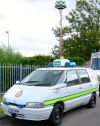
This view shows the roof mounted telescopic tower extended in order for the vehicle to be spotted at a major incident. Like the Ford above, it has been kept fully operational.
AEF 732C Moving even further back in time, this…

AEF 732C Moving even further back in time, this is a 1965 Commer ambulance maintained by Tees, East and North Yorkshire ambulance service. It has a top speed of 45 mph and throughout its life has only clocked up 8,000 miles.
Inside the back, showing the archaic equipment. This vehicle has been owned by the Civil Defence Corps, Hartlepool Ambulance Service and Cleveland Ambulance Service (all now defunct). The photos here shown it in 2005.

